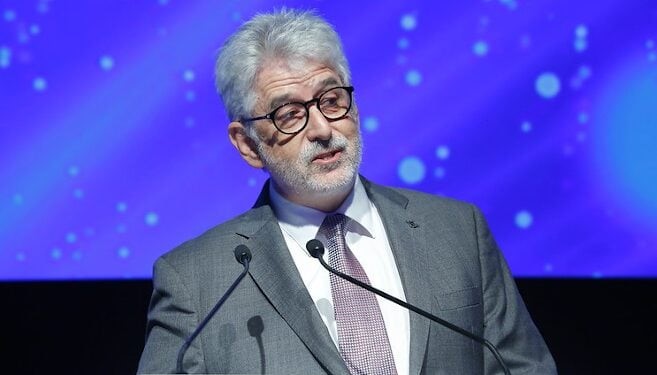#InsideTheBox with Dr Andy Gray | Should Pharmaceutical Advertising in SA Be Better Regulated, and Why?

By Andy Gray
For over 20 years, the law has required that the Minister of Health issues regulations to govern the advertising of medicines in South Africa, but as yet no such regulations are in place. In his latest #InsideTheBox column, Dr Andy Gray considers what this means for the marketing of medicines in the country.
Anyone who has travelled to the United States will have been struck by the extent to which medicines, both those requiring a prescription and those that can be bought by consumers without a prescription, are advertised on television.
The situation in South Africa is quite different. While there are many advertisements for medicines shown on local television stations, only some are specific about the proprietary (brand) name of the medicine and its indications. Other advertisements focus instead on the indication (the reason for using the medicine), but do not identify it by name. Instead, viewers are urged to approach their pharmacies or medical practitioners. At a different time, an advertisement may be flighted which identifies a medicine, its strength, pack size and perhaps price, but provides no information about what the indication for the medicine is.
To what extent does this represent meaningful and justified regulatory control over pharmaceutical marketing?
Only two countries with effective medicines regulatory systems allow prescription-only medicines to be advertised directly to the consumer, these being the United States and New Zealand. Other countries, including South Africa, restrict the advertising of prescription-only medicines to the health professionals who can prescribe or dispense them. One of the key justifications for this restriction on the ability of the pharmaceutical industry to market their products is that direct-to-consumer advertising may result in more inappropriate prescribing, when prescribers are under pressure from patients demanding medicines they have seen advertised. Short television advertisements are unlikely to be able to convey a balanced account of the potential benefits and harms of medicines, especially those that are new to the market.
South African law contains an interesting variant to regulation in this area. General Regulation 42 issued in terms of the Medicines and Related Substances Act, 1965, allows medicines containing substances in Schedules 0 and 1 to be advertised to the public, but requires that those containing substances in Schedules 2 to 6 to be advertised “only for the information of pharmacists, medical practitioners, dentists, veterinarians, practitioners, and other authorised prescribers” or “in a publication which is normally or only made available” to such persons. While Schedule 0 medicines can be bought in any retail outlet, Schedule 1 and 2 medicines can only be obtained from a pharmacy, but not self-selected from a shelf. The justification for that particular cut-off is difficult to trace in any policy document. An amendment to the regulation was published for comment in February 2023, but the final regulation has yet to be issued by the Minister of Health.
‘Failure to follow through’
The fundamental problem, however, lies in a failure to follow through on the legislation previously passed by Parliament. Section 18C of the current version of the Medicines and Related Substances Act, 1965, contains a prescriptive instruction to the Minister. “The Minister shall, after consultation with the relevant industries and other stakeholders, make regulations relating to the marketing of medicines, medical devices or IVDs and such regulations shall also provide for Codes of Practice for relevant industries,” it states. From 2003 to 2017, the section read: “The Minister shall, after consultation with the pharmaceutical industry and other stakeholders, make regulations relating to the marketing of medicines, and such regulations shall also provide for an enforceable Code of Practice.” The expansion of the remit, to include medical devices and in vitro diagnostics (IVDs) was added by Parliament in 2008, but only took effect in 2017.

The wording is peremptory – the Minister “shall” – which leaves no room for delay. While the word “enforceable” has been removed, the very intent of a regulation is that it should be enforced. That no regulations have been forthcoming in more than 20 years is an extraordinary failure of governance.
That failure is compounded by another act of omission. Section 18A of the Act states: “No person shall supply any medicine, medical device or IVD according to a bonus system, rebate system or any other incentive scheme.” The law also enables the Minister to “prescribe acceptable and prohibited acts” in this regard, in consultation with the Pricing Committee. No final regulations have been issued since 2017. The Pricing Committee is established to advise the Minister on matters relating to the pricing of medicines, such as the annual maximum increase and the dispensing fees charged by pharmacists and licensed dispensing practitioners.
It is already an offence, in terms of section 29 of the Act, for any person to make “any false or misleading statement in connection with any medicine, Scheduled substance, medical device or IVD”. Regulation 42 also states: “No advertisement for a medicine may contain a statement which deviates from, with or goes beyond the evidence submitted in the application for registration of such medicine with regard to its safety, quality or efficacy where such evidence has been accepted by the Authority in respect of such medicine and incorporated into the approved information of such medicine”.
While these two provisions may prevent false or misleading advertising, they are limited in their scope. In particular, since no complementary medicines are yet registered by the South African Health Products Regulatory Authority (SAHPRA), none have an approved professional information (previously known as a package insert) or a patient information leaflet.
Industry self-regulation
The pharmaceutical and medical devices industries have not been idle during this period of government inaction. A non-profit, self-regulatory body, the Marketing Code Authority (MCA), has developed a Code of Marketing Practice, drawing on international guidelines. This code provides for sanctions when rules are broken, following adjudication of a complaint. Fines of up to a maximum of R500 000 can be levied for severe or serious offences, which would, for example, pose “safety implications for patients”.
However, as a self-regulatory body, the MCA cannot require membership by any licensed manufacturer. It means that those manufacturers which are not members of the MCA are not bound by the Code and cannot be sanctioned. The MCA therefore advocates that compliance with a Code should be a condition to get a license to operate as a manufacturer. The MCA has also responded to draft regulations on perverse incentives.
At a time when deliberate disinformation is being disseminated from many quarters, including from government authorities previously considered to be reliable, a weakened regulatory system cannot simply be allowed to stagger along, in defiance of the express instructions of the legislature. Public safety demands an effective regulatory mechanism to proactively examine pharmaceutical marketing, across all media, the ability to take meaningful action where transgressions are identified, and an even playing field for all actors.
*Dr Gray is a Senior Lecturer at the University of KwaZulu-Natal and Co-Director of the WHO Collaborating Centre on Pharmaceutical Policy and Evidence Based Practice. This is part of a new series of #InsideTheBox columns he is writing for Spotlight.
Disclosure: Gray is a member of South Africa’s National Essential Medicines List Committee and co-chairs its Expert Review Committee.
Note: Spotlight aims to deepen public understanding of important health issues by publishing a variety of views on its opinion pages. The views expressed in this article are not necessarily shared by the Spotlight editors.
Republished from Spotlight under a Creative Commons license.
Read the original article.





